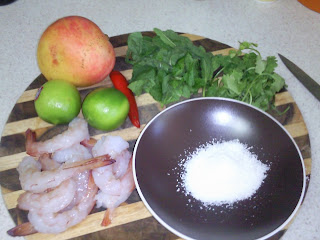I was recently given the most beautiful book, Saraban; it details Greg and Lucy Malouf's journey through Iran and includes recipes throughout. It's just about the ultimate in food porn: exquisitely written, rich with culture, history and personal anecdotes, as well as beautiful photography. I read it in bed at night with a cup of tea, and have been drooling at the prospect of making something from it soon.
The choices were extensive, but I couldn't go past a chelow, a classic Iranian rice dish that features a tah-deeg! It was a completely new way to make rice for me, and much more involved than the usual reduction method I use. The resultant texture was much more soft and fluffy than any I could ever recall eating. The tah-deeg literally translates to 'bottom of the pan' (apparently) and forms a crispy shell on the rice that I had to carve through with a carving knife. It's scrumptious.
You can make a basic chelow or you can mix things through the rice, making it even yummier. Since our spring vegetables are glorious, I decided to make a pea and broad bean chelow.
Ingredients:
- 300g basmati rice
- 1kg fresh broad beans in the pod
- 600g fresh peas in the pod
- salt
- fresh dill, finely chopped
- dried mint
- lemon rind
- 1 clove garlic
- small knob of butter, melted
- olive oil
While the rice is soaking, shell the peas and broad beans. Blanche them in boiling water for about a minute, then rinse them in cold water. Then remove the second shell on the broad beans by splitting it down the side with your finger nail, and then slipping the beans out (they'll do this easily).
Now, back to the rice!
Bring a large pot of water (about 2 litres) to boil with several tablespoons of sea salt. Add the rice and boil for a few minutes, and no more than five. The rice should have started to soften on the outside and still be hard on the inside, when you take it off the stove. Again, rinse it immediately in cold water to stop it from continuing to cook.
For the next part, use a lidded saucepan with a nice wide bottom, maybe one that curves up the sides, as this will be the shape of the tah-deeg. Add a generous pour of oil to the bottom of the pan and a few tablespoons of water. Place the pan on a high heat. Once the oil has started to sizzle, spoon rice over the base of the pan forming an even layer. Mix the remaining rice with the beans, peas, dill and mint, and spoon it into the pan (apparently spooning it prevents it from squashing in the dish, and thus it gets fluffier) into a big rice pyramid. Using the handle of the spoon, make five or six holes through the rice to the bottom of the pan to facilitate the steaming.
Place the garlic clove and lemon rind on top of the rice mountain. Then mix the small knob of butter with a few large spoonfuls of water, and drizzle this over the rice. The butter makes the dish quite rich so adjust to your tastes. The recipe calls for about 40g, but I would use about half this. (I was in such a flurry of activity getting all this done before too much steam evaporated, that I failed to take any photos of this bit).
Wrap the lid in a tea towel for an extra seal on the saucepan, and place it on the pan. Preparing the rest of the rice will take about a minute, so then turn the heat down low and leave it for about 40 minutes.
Once it's done, immerse the pan in a sink of icy cold water. This sudden change in temperature shocks the rice away from the sides of the pan. Then, invert the whole pan onto a plate, and feel a thrill of excitement that it actually worked!
You'll need a sharp knife to break through the tah-deeg, and it's just as much fun as smashing the top of a creme brulee, only savoury. I served the chelow in wedges with chermoula crusted whiting and wedges of lemon, and a really nice white wine my friend Mel kindly behind when she was here the other night.


















